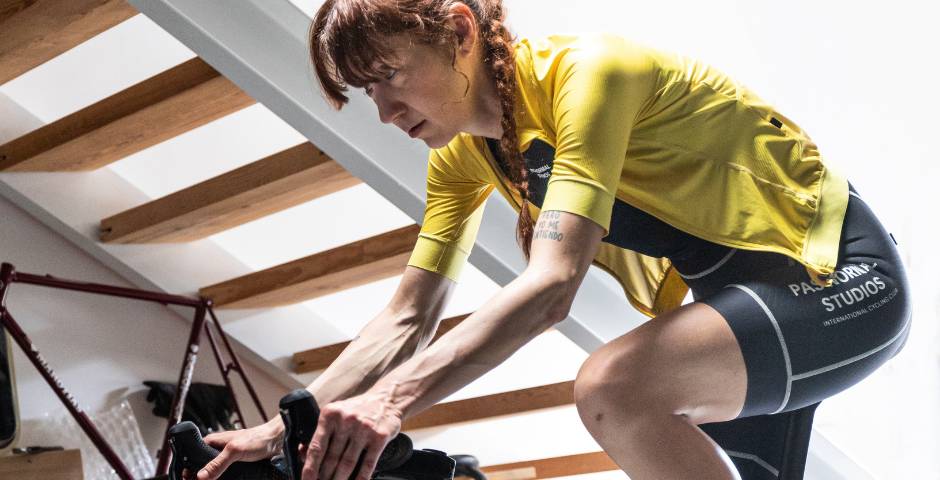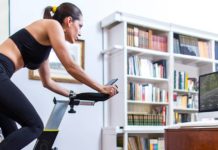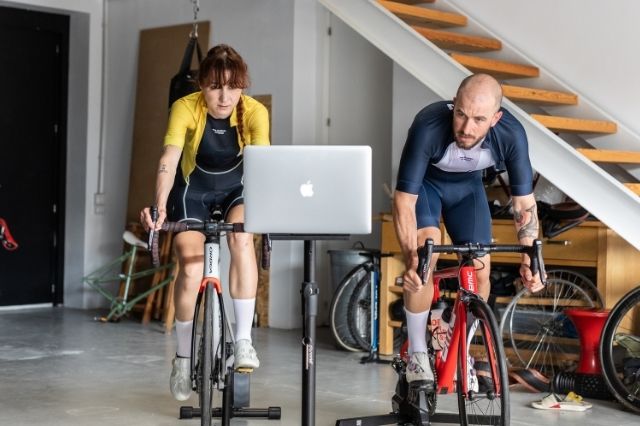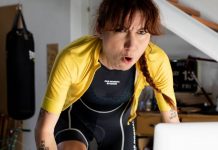Indoor cycling is a fast way to escape from the cold winter or save time training when don’t have as much free time as you would like. In addition, it is a great tool to work in a more specific way, avoiding external agents or complications. So, in case you decide to train on the trainer, we bring you a guide with everything you need to get the most out of your indoor sessions. Here we go!
Find the right place
Not everyone has the ability to turn a room at home into an Instagram pain cave. But don’t worry, you don’t need that much. All you need is an enclosed, protected space where you have a shelf or table handy (preferably in front of you).
Although almost any space that meets these requirements is fine, the most ideal set is somewhere that it is away from everyday life. In other words, do not try to place yourself in the kitchen. Basically, you probably don’t want to be moving the Smart trainer, the mat and the “work tools” from one place to another. So look for a place where you can set everything up almost permanently.
The bedroom may not be a good option either. Except if you sleep alone. You don’t know what you risk if you start pedaling when your partner is still asleep. No one can stand noise in the middle of a peaceful sleep and the roller is not the best friend of silence.

Choose a good trainer
First choose the type of trainer you want: turbo trainer, smart trainer or roller. Then try to make sure it’s a good one. This will depend on your taste and, of course, your budget. And the price range between some models and others is quite huge.
The turbo trainers are the most economical and are a good choice for beginners or for those athletes who do not want to spend too much time on indoor training. But they have their disadvantages, such as the wear and tear of the wheel or the absence of sensors of candency or power.
Direct-drive smart trainers play at a higher level. Their integrated cassette allows us to hook up the bike and save tyres. In addition, they are usually quieter and offer a more realistic pedaling feel.
Of course, the icing on the cake is the possibility to interact with simulators like Bkool and enjoy an almost complete training experience: circuits, data of all kinds or even changes in the slope.
Obviously, these features raise the cost. But, for those who want to spend hours training in indoor cycling, the investment is worth it.
Another option is what are known as rollers. They do not have any anchoring or fastening system, they are several cylinders that rotate when you pedal. Thanks to this they provide a more natural feel.
So much so that balance is very important here. In fact, they are a great tool for improving core strength and balance. But adapting to them and finding the balance is tricky at first.
Don’t forget the accessories
A towel, a fan and good hydration are necessary to combat the heat on the trainer and the humidity created by indoor cycling. Don’t overlook any of them.
Don’t forget to place a rug or mat on the floor to protect it from sweat. Many brands already sell such products specifically for home training.
And the most important: Bkool
Practising indoor cycling with a simulator like Bkool is key to making your workouts much more bearable. If you have a smart trainer or external sensors you can track all your data and keep track of the intensity.
In addition, Bkool gives you the ability to race online or set up workouts for your sessions. All this turns tough indoor cycling sessions into much more dynamic and fun workouts.
Of course, you’ll need a screen to follow all the action: a tablet or computer is ideal. We also recommend a headset so you can immerse yourself in everything that’s going on.
Now that you know the basics of indoor cycling, it’s time to start planning your sessions.













